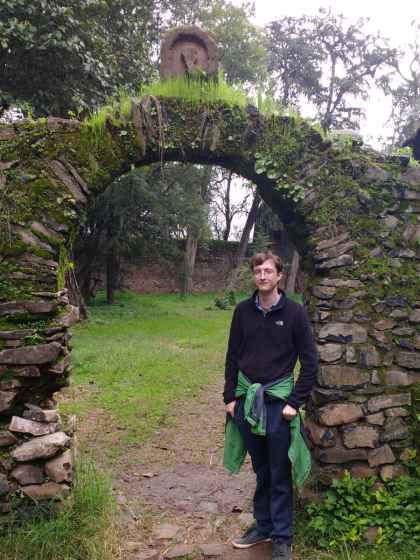T.M. (Tom) Britton, BA

Connecting the Greeks: Agonistic Festival Networks and Imperial Rule during the Hellenistic Period
The Connecting the Greeks project studies the social and political ramifications of the efflorescence of competitive festivals in the eastern Mediterranean from the third century BC onwards. This “agonistic turn”, marked in particular by the establishment and promotion of the Ptolemaia at Alexandria by Ptolemy II, was intimately connected with the upheavals resulting from the destruction of the Achaemenid empire which, at the end of the fourth century, transformed the political landscape of the eastern Mediterranean and much of the Middle East.
Agonistic festivals, as socio-religious institutions, were bound up with local, regional and broader cultural identities, but simultaneously the larger festivals were fundamentally international in scope and outlook, drawing competitors and spectators across hundreds of miles. These interactions created a dense network of festivals in the Hellenistic period which fostered cooperation and competition between diverse political actors, presenting threats and opportunities which necessarily drew the engagement of the nascent kingdoms, now the most powerful entities in the region.
I focus on the ensuing integration of agonistic festivals into the relational and ideological structures of royal rule in the Greek world. Royal intervention in what was fundamentally a civic network could take a multitude of forms – direct competition, the sponsoring of both athletes and festivals and the promotion of new or revised agōnes dedicated to kings or other members of royal families. This activity was carried out in close cooperation with civic elites and even federal institutions, but served primarily to further the interests of kingdoms in establishing greater influence over Greek cities and limiting that of their rivals.
I intend to apply the mathematical methods of Social Network Analysis (SNA) to determine as far as possible the structural features of the festival network, the impact of diachronic change on that structure and its significance for the position and influence of individual festival nodes. This will naturally require a reworking of some of the approaches most commonly employed in SNA, which are more suitable for networks of individuals than of competitions. It should, however, provide greater insight into the motivations behind both civic and royal interventions in the network, allowing us to trace the real impact of efforts to reshape this key medium of communication for political gain.
